On October 2 a large pile of tires was dumped below the Whitaker Avenue Bridge in Tacony Creek Park. One tire lodged in a forked trunk of a tree growing below the bridge. Two others had hooked a branch of another tree and remained suspended about 15 feet up in the air. A tire dropped from a bridge that happens to land on its edge can, of course, roll downhill, and several had ended up at the bottom of the creek, visible beneath the water.
Twenty days later, when Grid visited the park, the tires were still there.
Tacony Creek enters the city from Montgomery County, where it is called the Tookany, and forms a rough boundary between North Philadelphia and Northeast Philadelphia. For about three miles the creek winds through the 300-acre, mostly wooded city park with the public Juniata Golf Course on the southern end (which the creek exits with yet another new name: Frankford).
Visitors to Tacony Creek Park will find a landscape similar to those of the city’s other creek-corridor parks such as Cobbs, Pennypack, and the Wissahickon: a trail running along the creek, with woods and meadows rising on either side and some manicured park spaces along the edge. It’s a world apart, where flowing water, singing birds and towering oak trees provide a respite from the landscape of brick, concrete and asphalt. Tacony Creek Park is on the small side at 300 acres, especially compared to the Wissahickon at over 2,000 acres.
The park serves a mostly Black and Brown population living in a mix of working-class and high-poverty neighborhoods. The problems of those neighborhoods spill into the park in the form of gun violence, ATV use, and trash dumping in a way that visitors to the Wissahickon, which cuts through some of the city’s wealthiest neighborhoods, seldom encounter.
Not surprisingly, Tacony Creek Park visitors that Grid spoke with complained about dumping. “The park is something very pretty, but the people don’t take care of it, like here up ahead they dumped a pile of tires,” said a park visitor whom Grid interviewed in Spanish and who asked to remain anonymous out of fear of reprisal from illegal dumpers and ATV riders. She lives about three blocks from the park and takes a daily exercise walk with her husband. “After that the tires ended up in the creek as well. Also there were two cars; they burned them.”
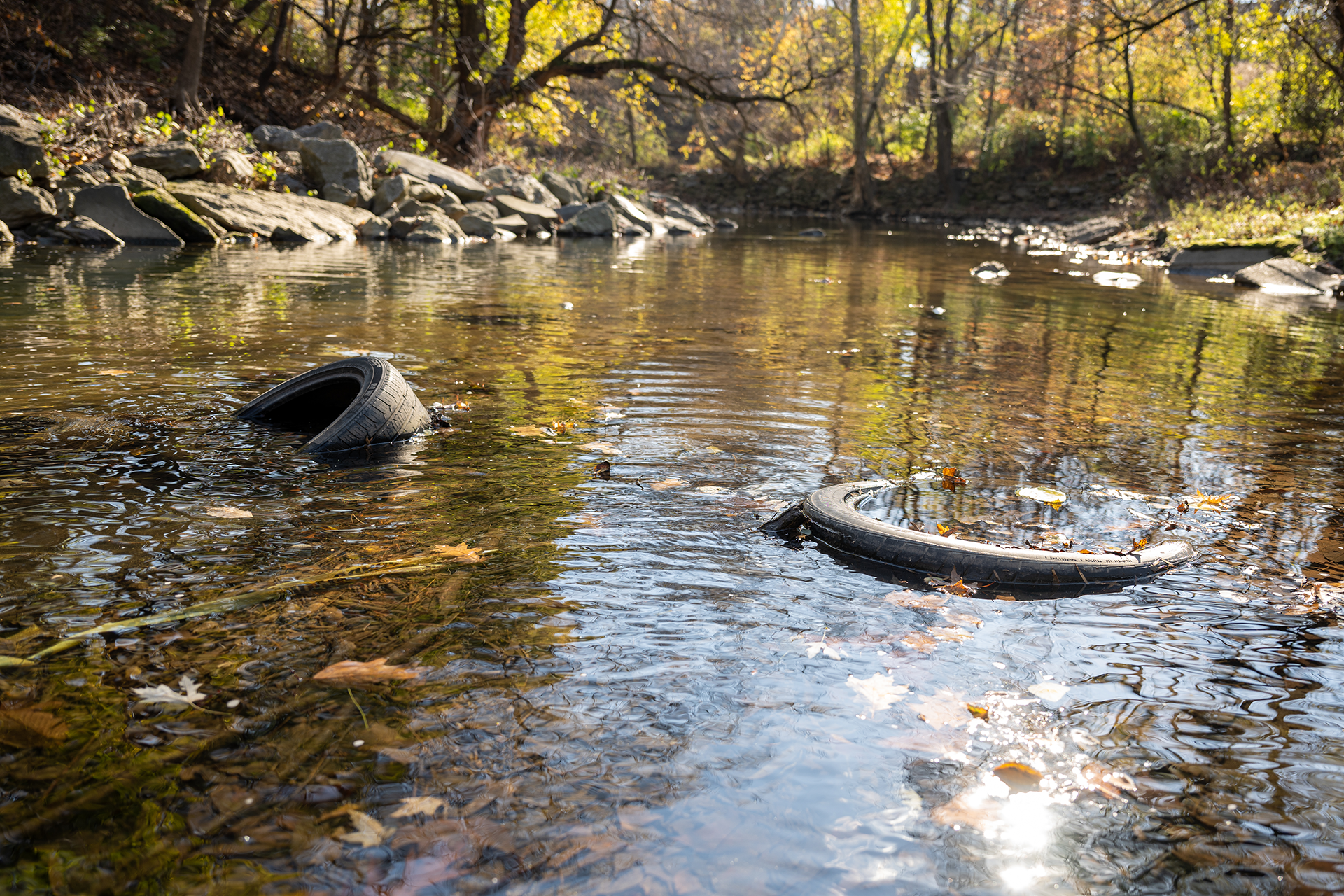
According to Julie Slavet, the director of the Tookany/Tacony-Frankford (TTF) Watershed Partnership, an organization that has taken on a stewardship role in the park, she had gotten in touch with the 25th Police District to point out the danger of abandoned cars next to a pile of flammable tires. “I said, ‘We’re going to have a tire fire,’” she says, and that motivated them to remove the cars.
The chronic dumping, and the City’s slow response, communicates a low regard for the park. Grid asked Silvina Godoy, who was walking on the main trail on October 22 and who serves on TTF’s board, what she’d like to see in the park. “More funding for safety, less dumping, more respect for the space. You can go to other parks and see that people don’t dump as much as they do here.”
If these tires were in the Wissahickon or on the [Benjamin Franklin] Parkway, they’d be gone.”
— Julie Slavet, executive director of the Tookany/Tacony-Frankford Watershed Partnership
Luanda Morris, a TTF board member who lives in Frankford, wishes the City did more to clean up the park. “Because we as TTF and as the community, we do a bunch of cleanups, and there’s never a cleanup where all the trash is removed. It’s not feasible for us,” she says. “I happened to be in the suburbs the other week and my family went on a walk in a state park. They had trash cans. You could tell they were cleaning it and making investments in it.”
Slavet was more blunt. “If these tires were in the Wissahickon or on the [Benjamin Franklin] Parkway, they’d be gone.”
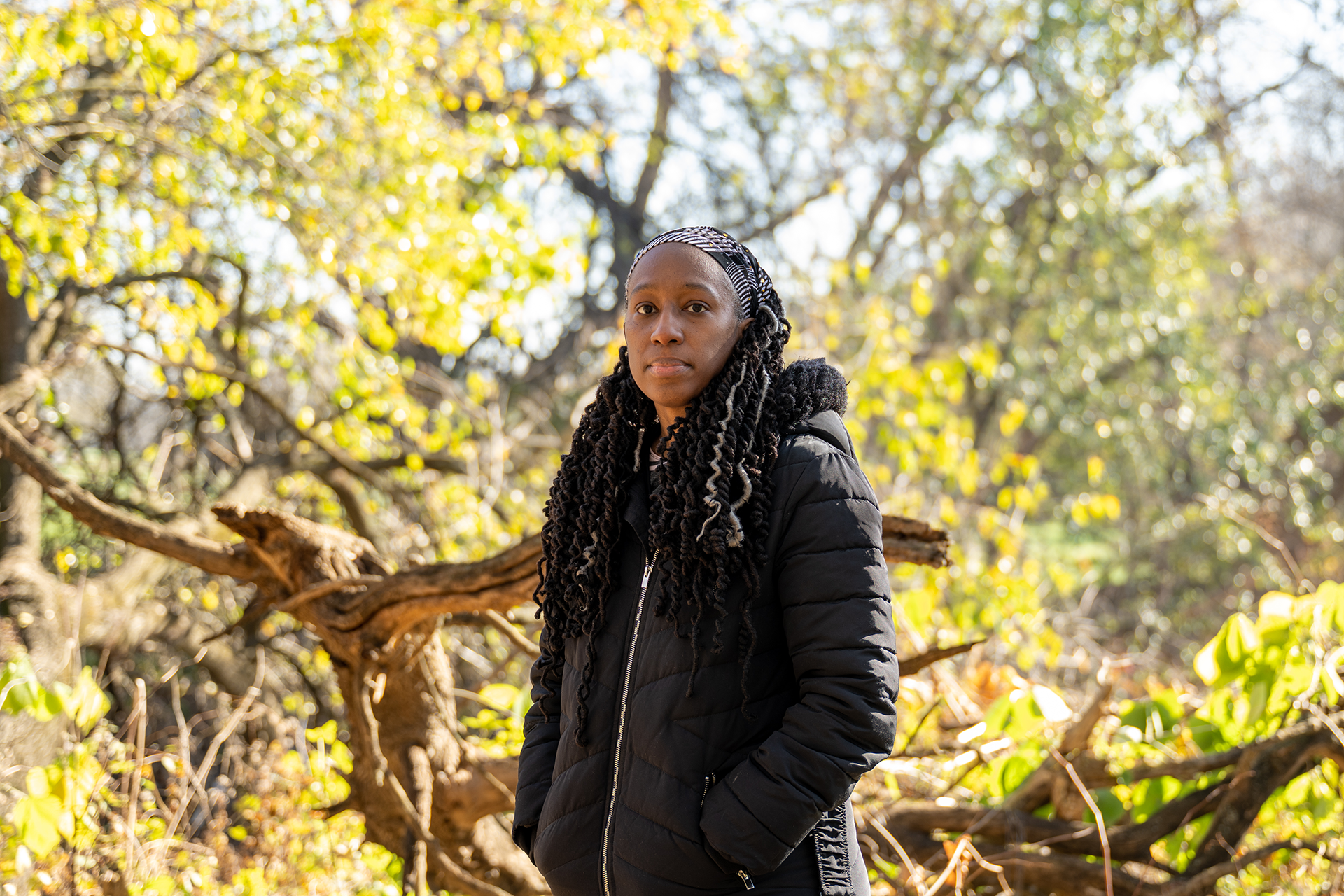
According to Philadelphia Parks & Recreation (PPR) spokesperson Maita Soukup, who responded to a Grid request for comment for this article by email, the department removed 18 tons of tires from the pile, though, by November 2, when TTF held a cleanup event to remove the tires, there was still a substantial pile under the bridge. According to Soukup, the department has responded to “more than 20 requests in the last 12 months to address short dumping, graffiti removal, or other repair needs resulting from nuisance behavior.”
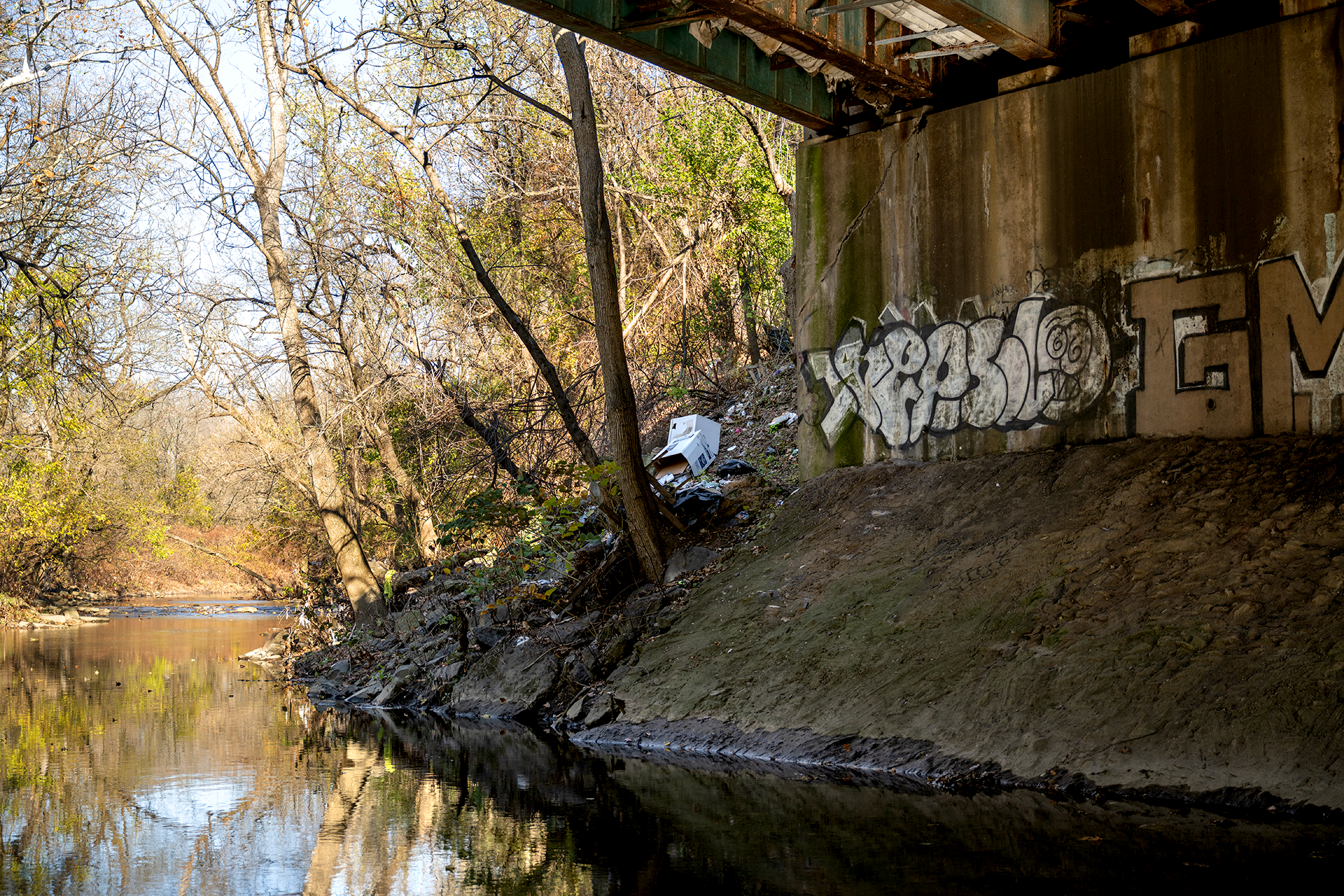
Grid visited Tacony Creek Park on a sunny Saturday for two hours around midday and encountered no more than 20 park visitors, a distinct contrast with busier parks such as the Wissahickon that are packed on nice weekend days.
According to community members who visit Tacony Creek Park, there are good reasons to avoid it, or at least to carefully choose safe times to visit. One of the trail signs had bullet holes. “On the path you can see many bullets,” said the same anonymous park visitor who had pointed out the tires. She only visits accompanied by her husband.
Siani Colón, who volunteers in park cleanups and who lives in the watershed, also talked about gun use in the park. “One thing in terms of safety that people are concerned about is gun violence. I have walked the trail many times and have found multiple casings along the trail,” she says. “At night you can hear gunshots and you can tell it’s coming from the park.”
Dirt bikes and four-wheel ATVs also endanger park visitors. “I was at an event going on, a bird walk, and I could hear the ATV from a distance, but as it got closer that’s when we started pulling the children aside,” Colón says. “The kids could have been hit. There was an instance where a child was hit by an ATV.”
Tim and Hope Johnston have taken their four children for nature walks and other programming in the park for the past 10 years. “We have found it can be difficult to use it at certain times because of the ATV use in the parks,” Hope says. “If you go in the morning, you’re probably okay. If you go in the afternoon it can be much more difficult, particularly with kids.”
Like other park stakeholders Grid spoke with, the Johnstons wish there were a place that ATV users could ride without putting others at risk. “I grew up in northern Vermont, and I have family members who love using ATVs in those rural communities,” Tim says. “I understand that they’re really fun, but it just does not work in a city park.”
PPR’s Soukup said that the department has installed new park gates and has placed logs and boulders at park access points “to discourage ATV use and limit access for potential short dumpers.”
ATV use came up at a June presentation of a draft master plan for the park, spearheaded by TTF in collaboration with conservation nonprofit Natural Lands and PPR. A neighbor of the park complained about the ATVs tearing up the vegetation and running families with children out of the park. The Natural Lands consultants presenting the draft plan mentioned physical changes to the park meant to deter ATV use. Ultimately, though, getting more people into the park is itself the best way to make ATV riding there less popular.
Along with safety concerns, a survey conducted for the planning process found that the biggest barrier to using the park more was that the park wasn’t clean. These themes echoed throughout the survey. The top four answers to a question about preferred improvements to the park were “trash cans,” “make park safer,” “deter ATV use” and “improve trail surface.”
Accomplishing all of these improvements won’t be easy. A more crowded park is less inviting to people engaged in illicit activities such as shooting guns, dumping tires or riding ATVs, but those same activities drive visitors away. Improving park maintenance, including picking up litter and emptying trash cans, is labor intensive, and it runs into the hurdle of an under-resourced PPR.
Toward the end of 2019 TTF, partnering with the Partnership for the Delaware Estuary, the Philadelphia Water Department, Clean PHL and the Managing Director’s Office, installed 20 “community cans” around the Juniata Park end of the park, including Ferko Playground. These were not simply off-the-shelf garbage receptacles, but cans painted in a community event and designed by local artist Jay Coreano. But at the start of the pandemic, as the Department of Streets fell behind in collecting trash throughout the city, household trash started piling up next to them. Then the community cans started to disappear. “We thought they had been stolen,” Slavet says.
She learned the truth when she happened to see the cans piled up at a PPR maintenance facility. Slavet says she called PPR’s deputy commissioner of operations, Sue Buck, who, according to Slavet, apologized and explained that PPR maintenance crews pulled the cans to stop attracting trash. Slavet sympathizes with the overworked PPR staff. “I know [Buck’s] life is crazy, and she has been responsive to us,” Slavet said, but she disagrees that removing trash cans is the right way to deal with the city’s waste problem. “There is an unwillingness to admit lack of capacity and plan how to solve it. The city has all these problems caused by poverty, and the way we’re going to deal with them is to say people can’t have nice things because it will make the problems more visible.”
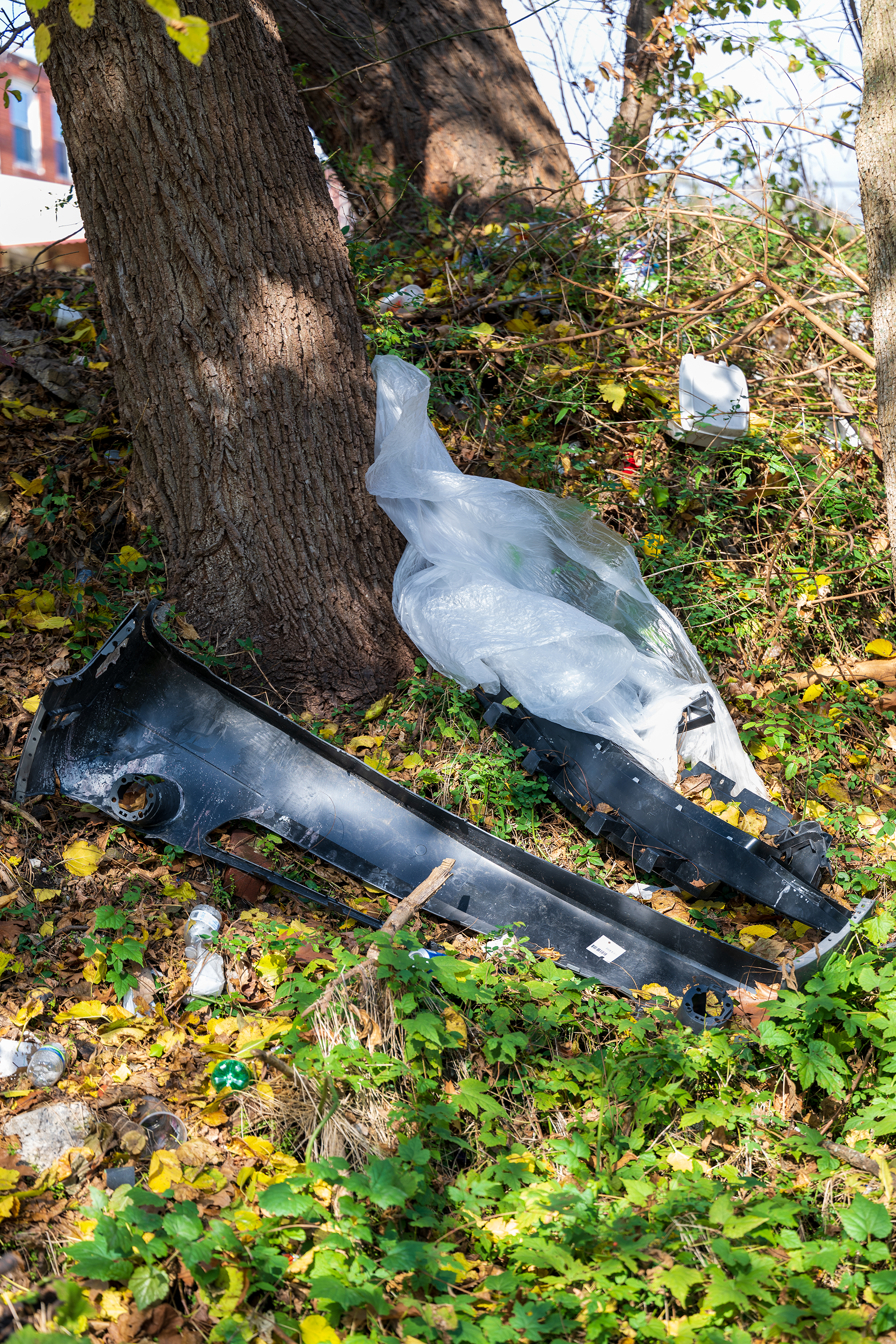
Tacony Creek Park.
There is widespread agreement that PPR lacks the money to adequately and equitably maintain Philadelphia’s park system.
According to the Trust for Public Land’s ParkScore, which is based on figures reported to the trust by city parks departments, Philadelphia budgets $50 per capita for PPR’s capital and operations budgets (capital refers to one-time expenses like constructing and renovating buildings, which usually is paid for by the City borrowing money by issuing bonds, while the operations budget, which includes maintenance and programming, comes from annual tax revenue and other income such as grants), well below the national average for park budgets of $83. Philadelphia also gets an unusually high total of $22 per capita (30% of total parks spending) from volunteer hours and spending from private groups, compared to the national average of $8 (8% of total spending).
Another way to measure the under-spending in Philadelphia parks is the decline in spending relative to the overall City operating budget. A 2021 study examining the increase of tree cover in Philadelphia drew a connection to reduced park spending. As maintenance budgets declined in the 20th century, the reduced mowing and trimming let trees grow in untended areas.
The budget for the Fairmount Park Commission, which governed watershed parks such as Tacony Creek and the Wissahickon, and which merged with the Recreation Department in 2010 to create Philadelphia Parks & Recreation, went from 2.26% of the City’s operating budget in 1960 to 0.32% in 2009, approximately one-seventh of what it was almost 50 years prior.
The parks budget still has not recovered. According to City budget figures, in fiscal year 2022 PPR spent $77.8 million in operating funds (this includes $65.4 million from the tax-funded general fund as well as $12.4 million in grants) out of a total City operating budget of about $5.5 billion. It is difficult to completely separate spending on what used to be the Fairmount Park system, but subtract $34.5 million spent on recreation services (mostly rec centers), and the remaining $43.3 million is 0.78% of the total City operating budget, more than the low point in 2009, but about a third of the percentage that the City spent on parks at its peak.
PPR’s Soukup wrote that the department spends about 20% of its operating budget, or about $15 million, on “park operations and ground maintenance staff and turf and tree maintenance for the entire system.”
Although Philadelphia spends relatively little on its parks, it is not alone in seeing park spending decline, particularly on maintenance. “Maintenance and funding are the number one questions that we hear from cities across the country,” says Bianca Shulaker, the Trust for Public Land’s Parks Initiative lead and director of the 10-Minute Walk Program, which aims to close the parks equity gap. She pointed to a national decline in average park spending per capita from 2007 to today, in spite of the pandemic demonstrating the need for clean and safe parks.
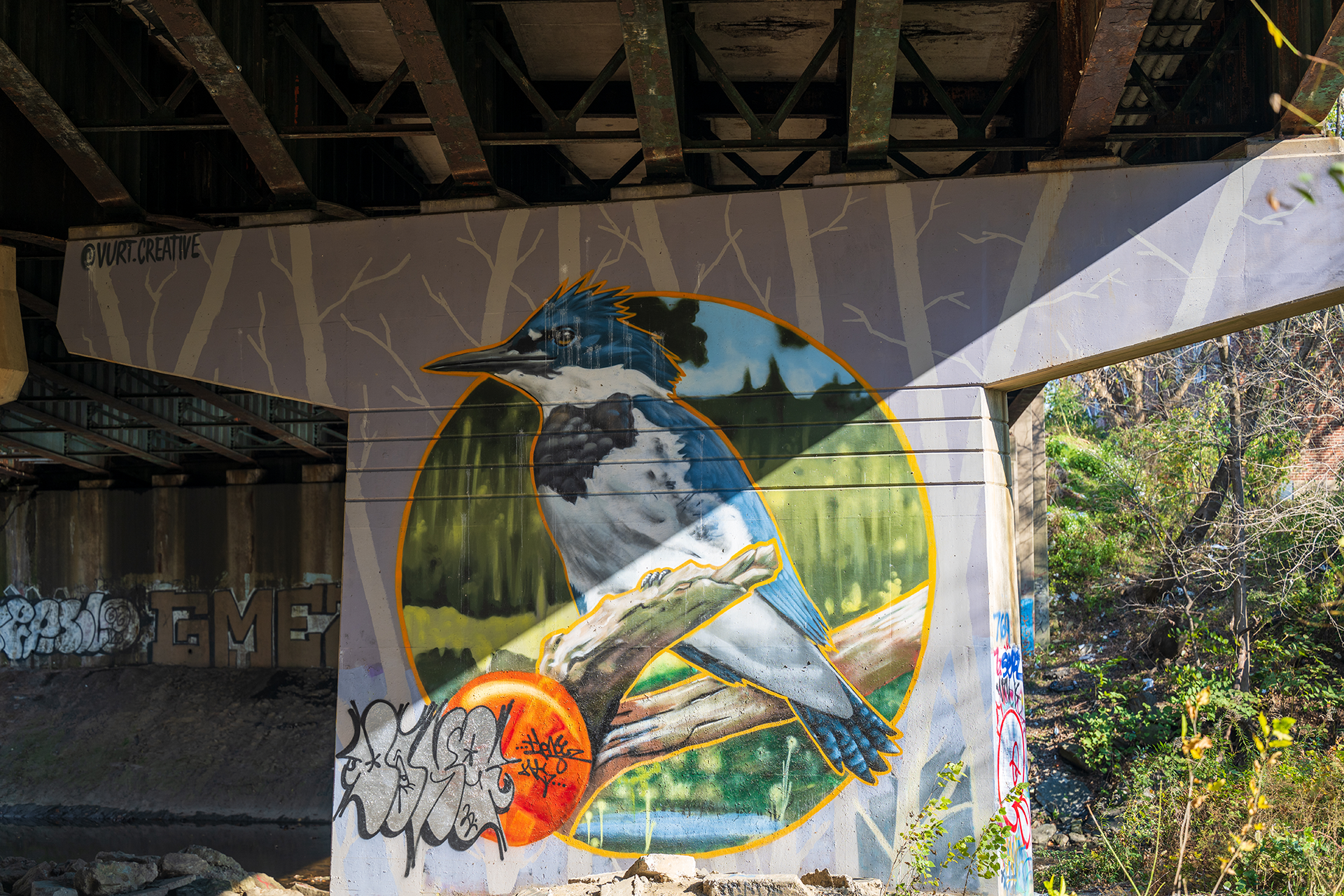
The challenge of funding maintenance also holds back growth in park systems. “The number one thing we hear from cities is they can’t add new park spaces in places that really need them since they don’t have the budgets to maintain parks that they already do have,” Schulaker says.
In Philadelphia recent controversial parks planning decisions can be traced to the inability to fund maintenance. As Grid reported in March, the flood-prone and run-down Cobbs Creek Golf Course was seen by elected leaders as a “stranded asset” best offloaded to a suburban foundation, rather than an opportunity to add park space that would meet the needs of local residents who, almost without exception, don’t golf. The master planning process of FDR Park was largely shaped by the need to avoid adding operational expenses to PPR’s budget. The park is planned to operate completely on earned revenue, which, among other decisions, led planners to create 12 synthetic turf playing fields that could be rented to soccer leagues and to avoid employing the city’s union labor force. When a parks system cannot rely on public spending, its decisions tilt toward what the market and philanthropists are willing to pay for.
The Fairmount Park Conservancy provides stewardship and programming in large swaths of the park system, including FDR Park, East Fairmount Park and West Fairmount Park. It also co-manages the Park Friends Network with PPR, which supports park friends groups across the city. Maura McCarthy, the executive director of the Fairmount Park Conservancy, responded to Grid’s questions about park equity by email, emphasizing focused park investments in underserved communities and relying on neighbors to support their parks. “Uniform quality in a perfect world would simply require money, but that much money is, sadly, virtually impossible to realize in a city with so much need across the board. Equity is more possible, but requires thought, creativity and investment. Sometimes that means investing in a hyper local pocket park, sometimes it means distributing resources to a more regional asset. In most cases, it also means tapping into the ‘hearts, hands and voices’ of the community to maximize the investments that can be made in our public lands.”
PPR’s Soukup likewise highlighted the system’s strategy of relying on local parks support groups. “The Philadelphia Park Friends Network represents volunteers and partner organizations from every corner of the city, including in high poverty communities as well as more affluent areas. We work hand in hand with friends groups and partners to fundraise, leverage external partnerships and attract resources to parks in high need areas.”
Given the low public spending on Philly parks, it is entirely natural for communities to step in to improve their local parks. The outcome, however, is that parks in well-off neighborhoods end up better maintained than parks in poor neighborhoods with greater needs, magnifying inequity. For example, based on figures in federal tax filings (IRS Forms 990), the Friends of the Wissahickon has an annual budget of nearly $2 million, which it uses to provide stewardship and programming in the park. Cobbs Creek Park, a park on the western edge of the city with similar maintenance challenges as Tacony Creek, has no friends group at all.
Friends groups can also be less stable than City departments. Pennypack Park in Northeast Philadelphia lost its friends group in 2020 after lawsuits made the organization uninsurable, forcing it to fold.
Friends groups also rely on neighbors having the time and resources to organize. “In places where people can’t do a friends group, it’s not equitable to expect communities to pick up maintenance needs,” Shulaker says. “Maintenance and operations are a core part of park systems. Private funding is an important part of the puzzle, but at the end of day we need to see an increase in public investment.”
In May Grid interviewed Temple University sociologist Kevin Loughran, author of “Parks for Profit.” In the book Loughran calls for an end to private parks groups, saying that they promote inequitable park development and conditions and take the pressure off of governments to sufficiently and equitably fund their parks. “It’s about forcing the City to do something different and having a political mobilization that is a genuine social movement that’s not something that is going to just shore up the already existing privileges,” Loughran says. “And yes, it’s nice to be involved very locally and be engaged in your own neighborhood, in your own community, but we’re part of a huge city that has a very uneven level of park development and park access. I think those energies would be much better spent mobilizing a general push for more money for parks.”
Alex Doty, the director of the Philadelphia Parks Alliance, an advocacy group for Philly parks, thinks that focusing on disparities among parks misses the point: that the city, state and federal governments all devote too little money to local parks. “There is still a need to recognize a difference between Philadelphia neighborhoods, but to me that is a small part of the problem,” Doty says. “The problem is how much we are spending on Philadelphia parks as a whole.”
In contrast to Philadelphia, other cities have responded to inequitable park conditions by finding creative ways to increase overall spending. In 2019 Pittsburgh voters passed a ballot initiative to add a specific parks tax. Money raised by the tax goes into a trust fund to be spent on parks projects and maintenance, with a focus on parks in the city’s poorest neighborhoods.
PPR currently lacks a strategic framework to equitably fund park operations. Other cities have worked to more equitably spend the funds they have. Portland, Oregon, for example, adopted an “equity and anti-racism lens” for parks planning and operations. “Portland made a really big switch of how they’re deploying resources,” Shulaker says. “They have an equity filter to direct capital and general improvements. There has been a big shift in how they’re spending since the new system.”
Tacony Creek Park runs through City Council districts nine and seven, until recently represented by Cherelle Parker and Maria Quiñones-Sánchez, respectively, both of whom have resigned to run for mayor. Grid reached out to them to get their thoughts on how to improve conditions in Tacony Creek Park, and how to get more funding for underfunded parks.
It is my belief that neighborhood parks do not receive the same attention and investment as Center City areas .”
— Maria Quiñones-Sánchez, former Philadelphia City Councilmember and current mayoral candidate
“Once we consider the economic, psychological and environmental impact that parks including Tacony Creek Park have on our city, it is quickly clear that the City has a moral imperative to support these parks, and that means more funding,” Parker commented by email. “Tacony Creek Park is a shining gem of Philadelphia! It may be small compared to other parks in our city, but it is mighty. Environmentally, it plays the important role as a home for wildlife and as a watershed, and it also serves the critical role of providing green, recreational space for the neighborhoods surrounding the park.”
“It is my belief that neighborhood parks do not receive the same attention and investment as Center City areas. City Council members can advocate for resources and investment, but the mayor is the one who sets a vision for an equitable deployment of resources,” Quiñones-Sánchez commented by email. “Tacony Creek Park and the TTF watershed are a special place in the 7th District — beautiful woodland and walking trails right in the heart of Juniata and serving the Frankford and Northwood neighborhoods as well. Many Philadelphians do not know that our city’s water systems rely heavily on the watershed, and it’s in everyone’s best interest to make sure it is funded and cared for.”
All of the park users and stakeholders Grid spoke with for this article emphasized what they love about Tacony Creek Park.
Tim Johnston spoke about his children’s experiences connecting with nature in the park. “It has played an important part for them appreciating God’s creation. I think that has been an important part of their development in the city.”
Luanda Morris sees the park as a refuge from dangers in the neighborhoods around the park. “I got involved in visiting Tacony Creek Park as a place to take my daughters to walk and enjoy nature, to ride their bikes without the threat of traffic,” she says. “We know in our neighborhood and communities we’re seeing an increase in violence. If we have cleaner and greener parks, that has an opportunity to reduce violence.”
“I think Tacony Creek Park has so much potential and I want it to be the Wissahickon for this section of Philadelphia,” Colón says. “I feel like the Wissahickon is kind of the aspiration because it’s large, so many people attend it and so many resources go into it that Tacony Creek Park is lacking.”


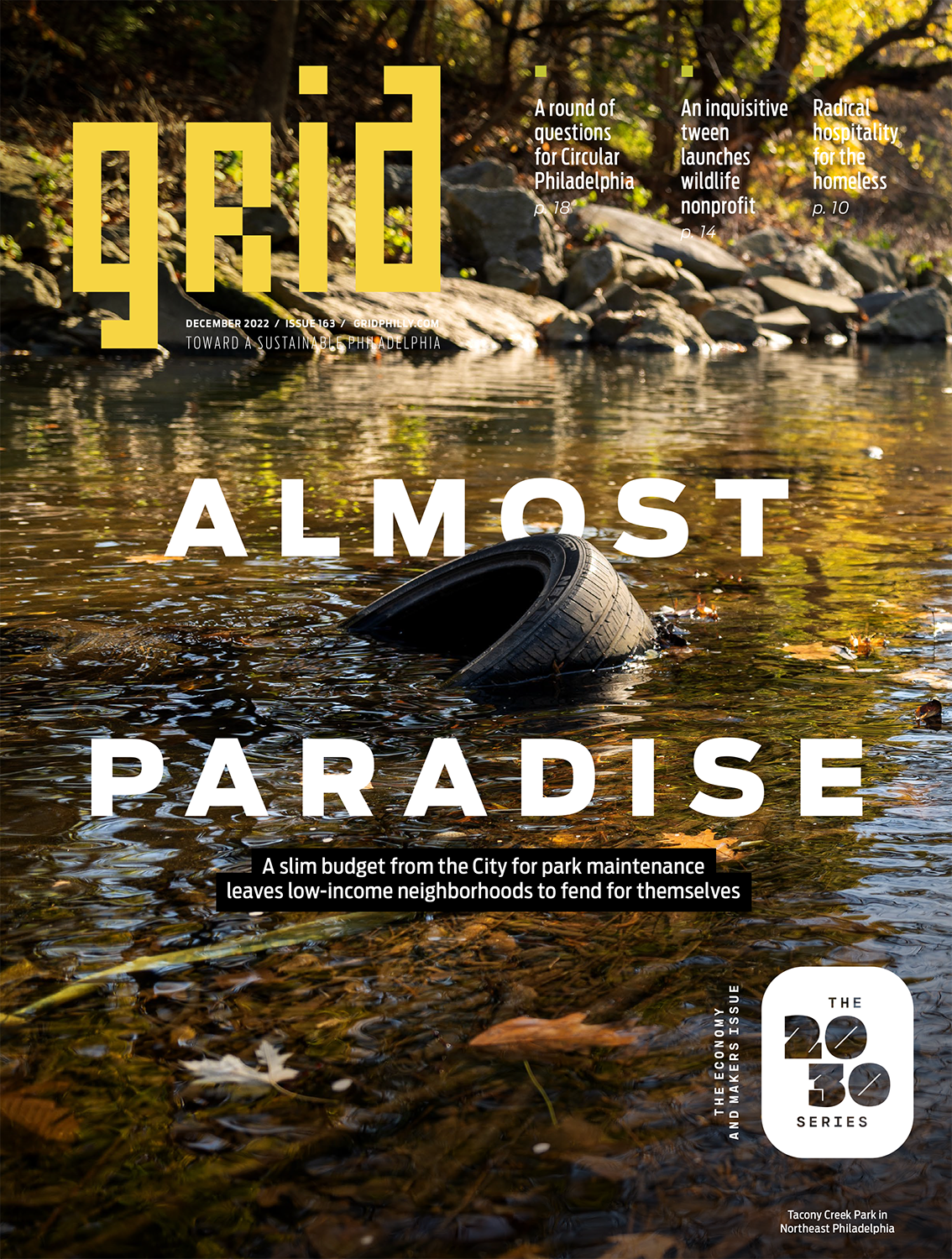
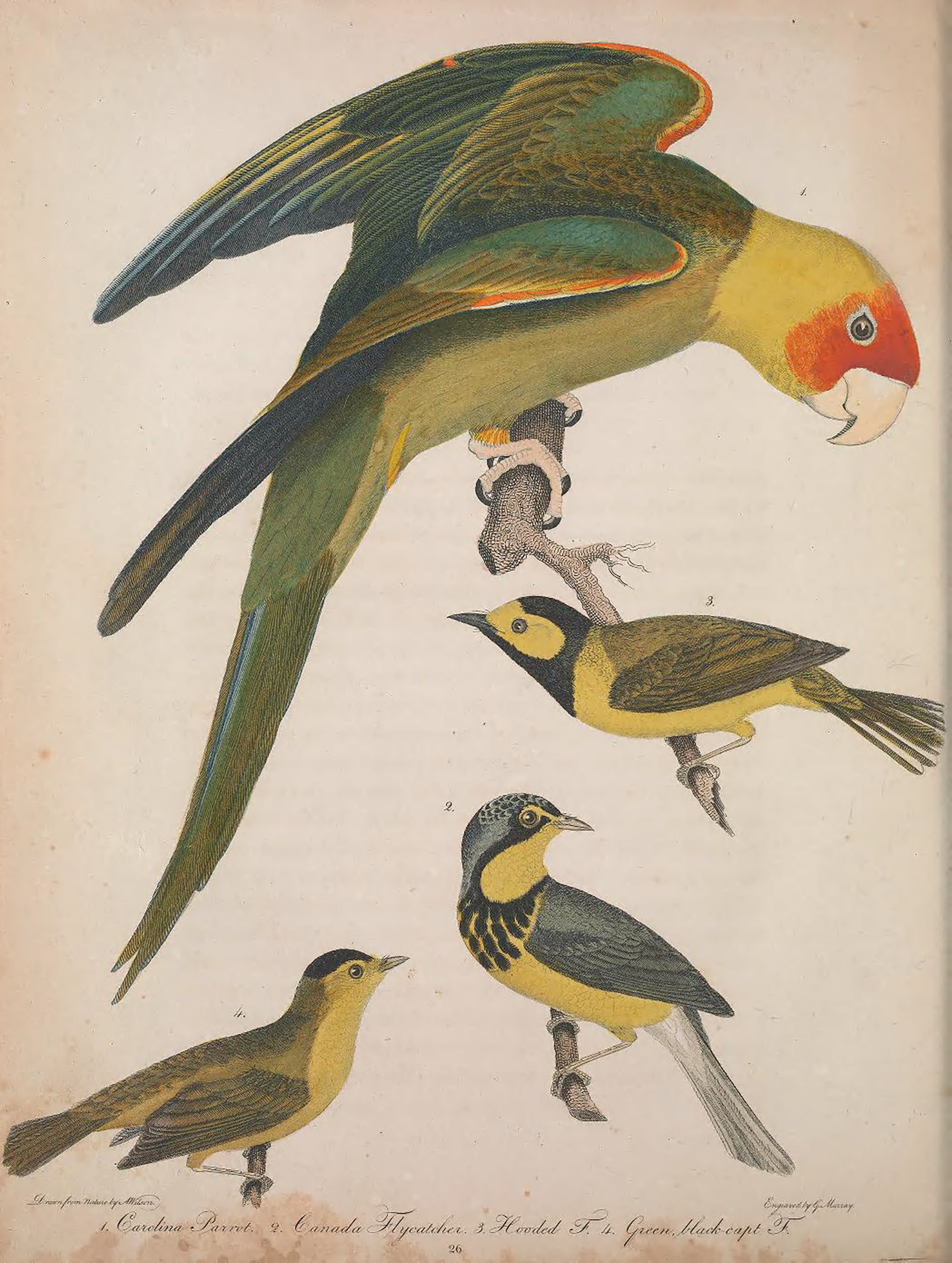
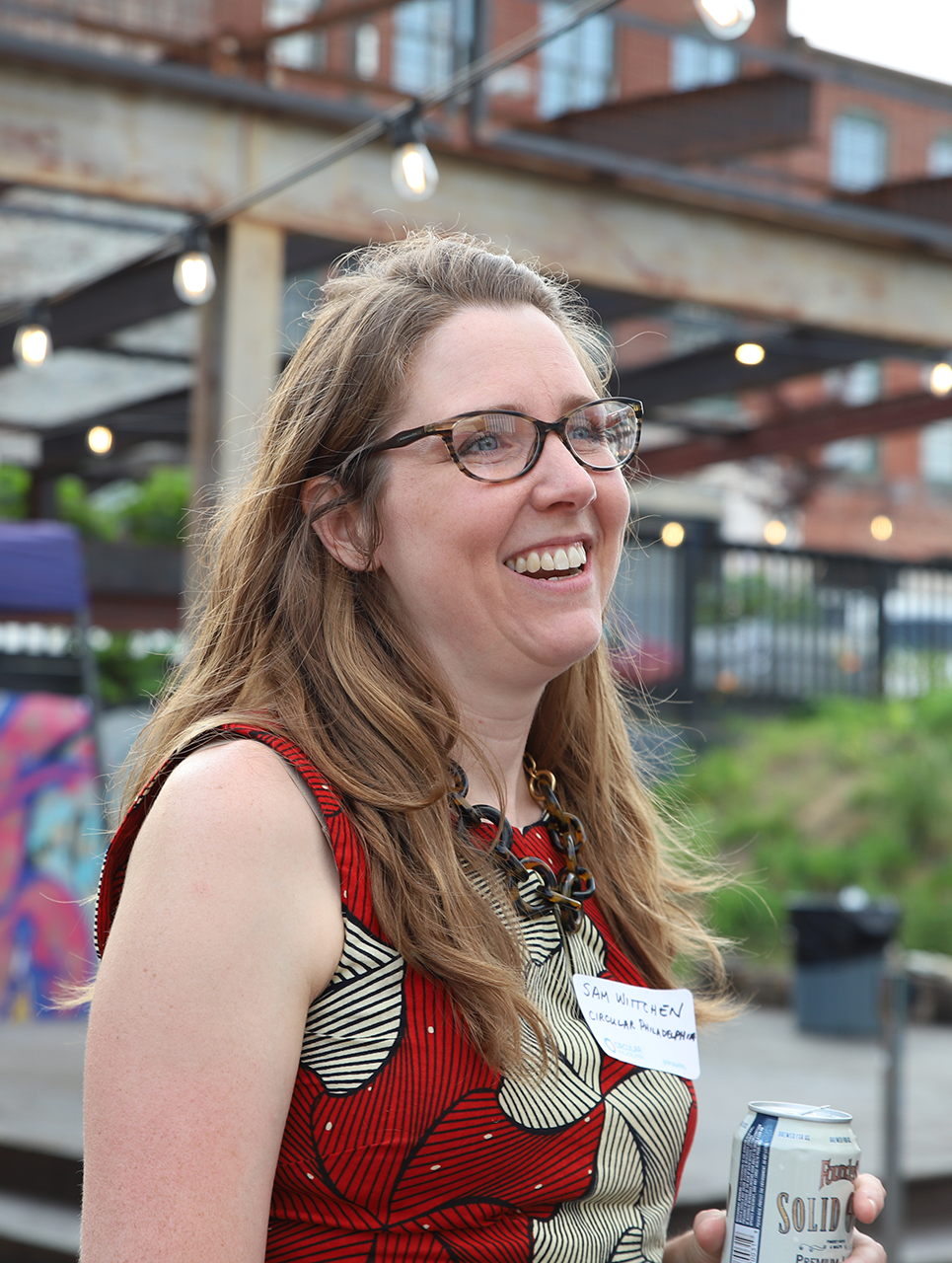
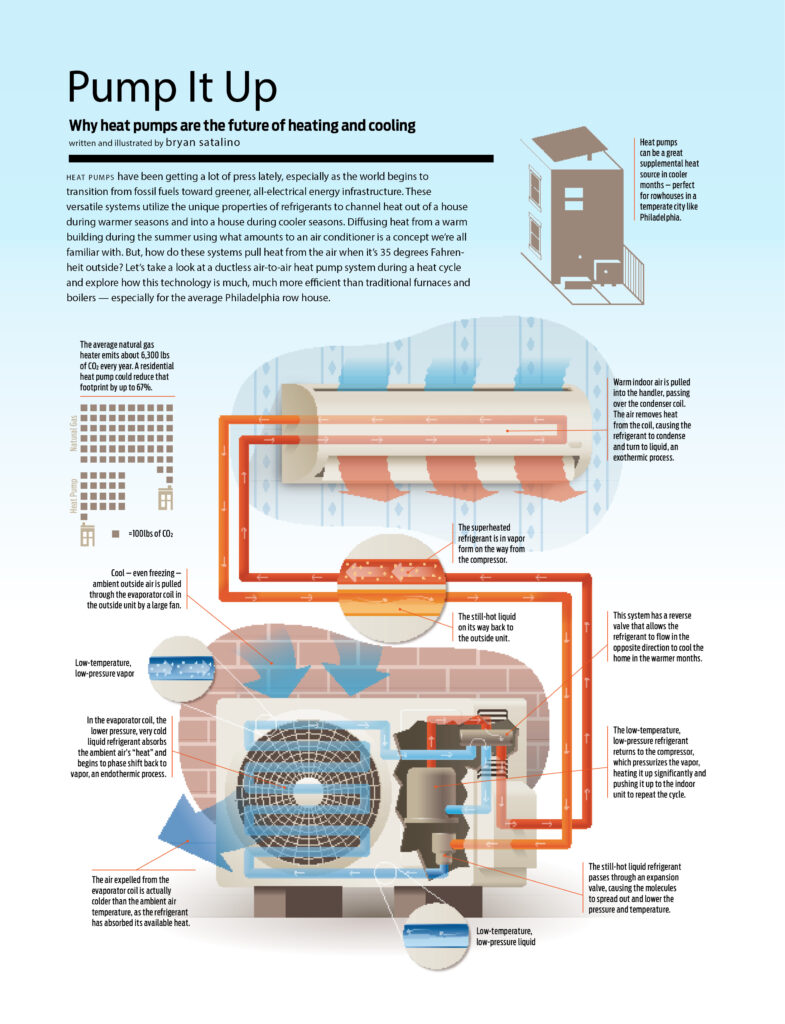




This is great